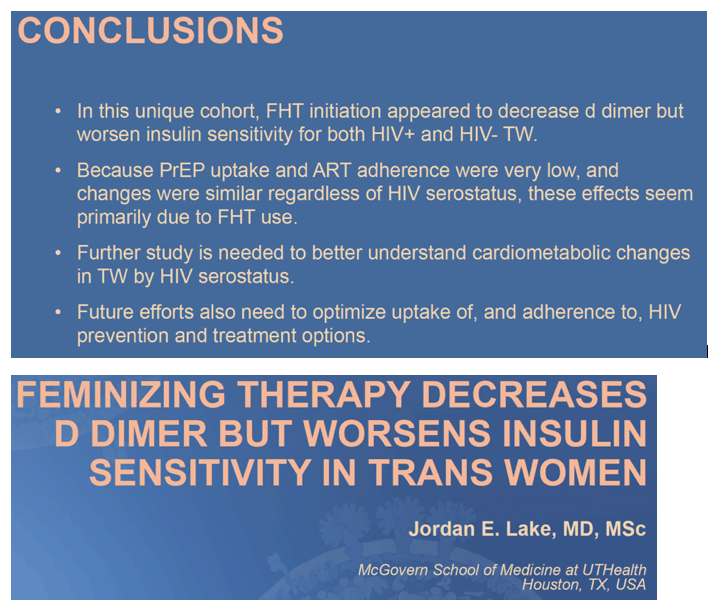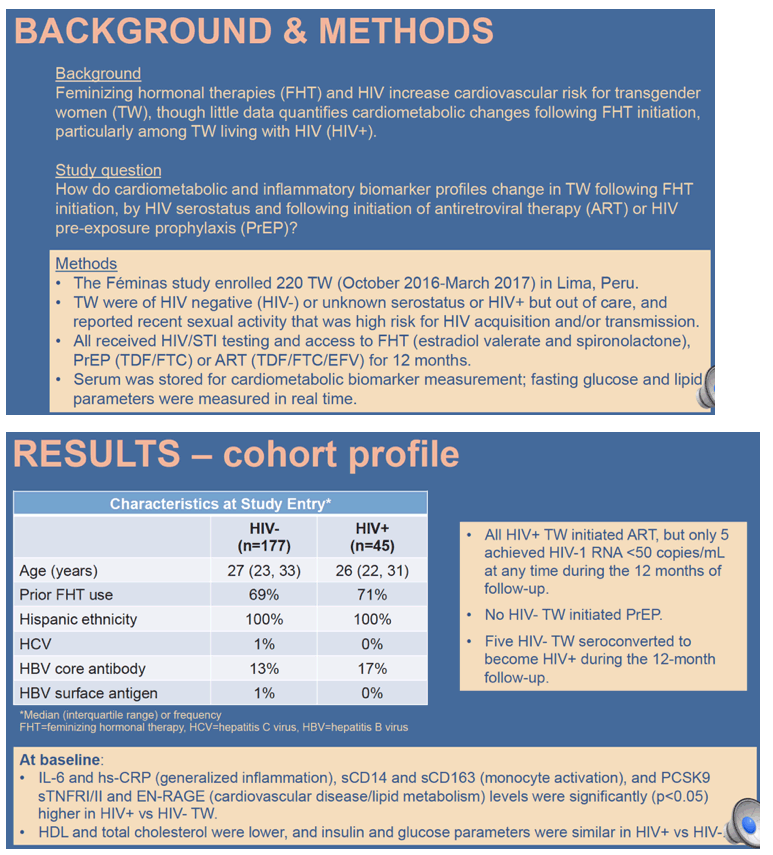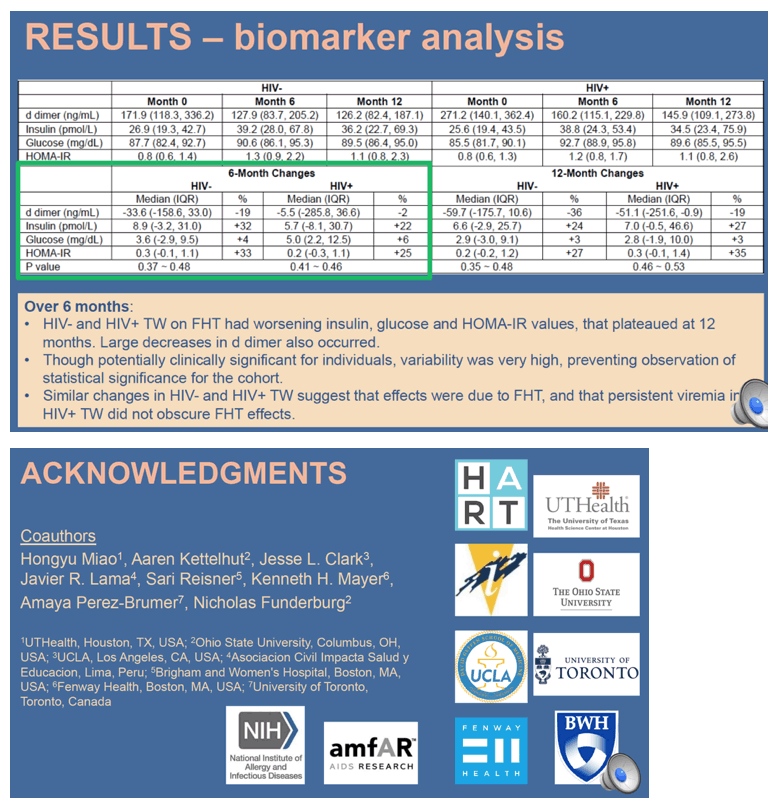 |
 |
 |
| |
FEMINIZING THERAPY DECREASES D-DIMER BUT
WORSENS INSULIN SENSITIVITY IN TRANS WOMEN
|
| |
| |
CROI 2021 Reported by Jules Levin
Jordan Lake1, Hongyu Miao1, Aaren Kettelhut2, Jesse Clark3, Javier R. Lama4, Sari Reisner5, Kenneth H. Mayer6, Amaya Perez-Brumer7, Nicholas Funderburg8 1UTHealth, Houston, TX, USA, 2O&M School of Medicine, Santo Domingo, Dominican Republic, 3University of California Los Angeles, Los Angeles, CA, USA, 4Asociacion Civil Impacta Salud y Educacion, Lima, Peru, 5Brigham and Women's Hospital, Boston, MA, USA, 6Fenway Health, Boston, MA, USA, 7University of Toronto, Toronto, Canada, 8Ohio State University, Columbus, OH, USA
Background: Feminizing hormonal therapies (FHT) and HIV are known to increase cardiovascular risk for transgender women (TW), though little data exists to quantify cardiometabolic changes following FHT initiation, particularly among TW living with HIV (HIV+).
Methods: The Féminas study enrolled 220 TW from October 2016-March 2017 in Lima, Peru. Participants were of HIV negative (HIV-) or unknown serostatus or HIV+ but out of care, and reported recent sexual activity that was high risk (i.e., condomless intercourse, partner discordance) for HIV acquisition and/or transmission. All received HIV/STI testing and access to FHT (estradiol valerate and spironolactone), PrEP (TDF/FTC) or ART (TDF/FTC/EFV) for 12 months. Serum was stored for cardiometabolic biomarker measurement; fasting glucose and lipid parameters were measured in real time.
Results: 171 TW (32 HIV+, 139 HIV-) had stored samples for analysis. Median age was 26 years, 70% had history of prior FHT use.
At baseline, PCSK9, sCD14, sCD163, IL-6, sTNFRI/II, CRP and EN-RAGE levels were significantly (p<0.05) higher in HIV+ vs HIV- TW, whereas HDL and total cholesterol were lower, and insulin and glucose parameters were similar (data not shown). All HIV+
TW started ART, but only 5 achieved HIV RNA <50 copies/mL at any time on study. No HIV- TW initiated PrEP. All participants initiated FHT.
Over 6 months, HIV- and HIV+ TW on FHT had worsening insulin, glucose and HOMA-IR values (Table 1). Large decreases in d dimer also occurred. Though potentially clinically significant for individuals, variability was very high, preventing observation of statistical significance for the cohort. Similar changes in HIV- and HIV+ TW suggest that persistent viremia did not obscure FHT effects.
Conclusion: In this unique cohort, FHT initiation appeared to decrease d dimer but worsen insulin sensitivity for both HIV+ and HIV- TW. Because PrEP uptake and ART adherence were very low, these effects seem primarily due to FHT use. Further study is needed to better understand cardiometabolic changes in TW by HIV serostatus and to optimize uptake of, and adherence to, HIV prevention and treatment options.



|
| |
|
 |
 |
|
|